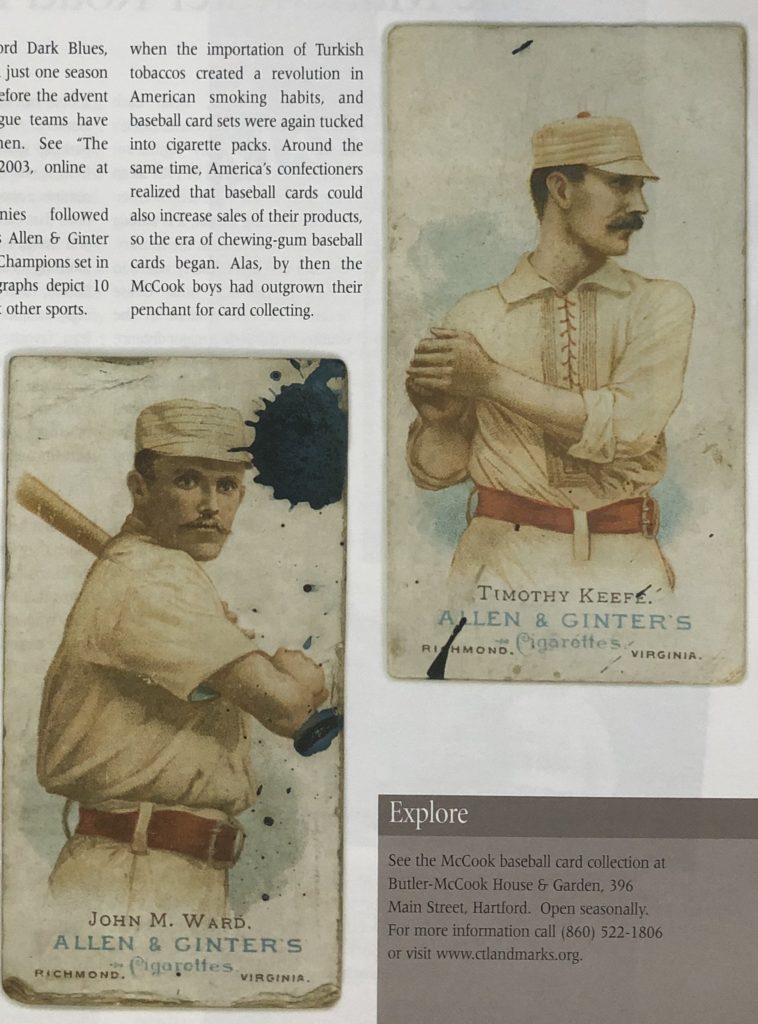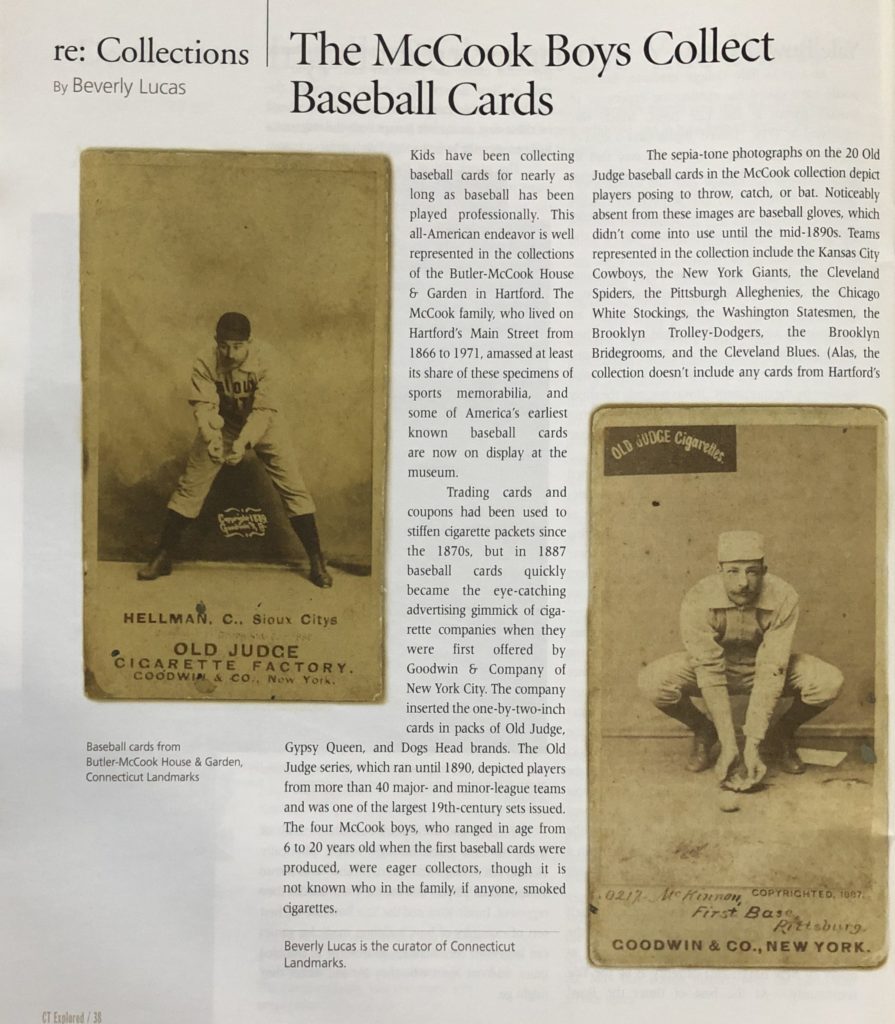(c) Connecticut Explored Inc. Fall 2009
Subscribe/Buy the Issue!
Kids have been collecting baseball cards for nearly as long as baseball has been played professionally. This all-American endeavor is well represented in the collections of the Butler-McCook House & Garden in Hartford. The McCook family, who lived on Hartford’s Main Street from 1866 to 1971, amassed at least its share of these specimens of sports memorabilia, and some of America’s earliest known baseball cards are now on display at the museum.
Trading cards and coupons had been used to stiffen cigarette packets since the 1870s, but in 1887 baseball cards quickly became the eye-catching advertising gimmick of cigarette companies when they were first offered by Goodwin & Company of New York City. The company inserted the one-by-two-inch cards in packs of Old Judge, Gypsy Queen, and Dogs Head brands. The Old Judge series, which ran until 1890, depicted players from more than 40 major- and minor-league teams and was one of the largest 19th-century sets issued. The four McCook boys, who ranged in age from 6 to 20 years old when the first baseball cards were produced, were eager collectors, though it is not known who in the family, if anyone, smoked cigarettes.
The sepia-tone photographs on the 20 Old Judge baseball cards in the McCook collection depict players posing to throw, catch, or bat. Noticeably absent from these images are baseball gloves, which didn’t come into use until the mid-1890s. Teams represented in the collection include the Kansas City Cowboys, the New York Giants, the Cleveland Spiders, the Pittsburgh Alleghenies, the Chicago White Stockings, the Washington Statesmen, the Brooklyn Trolley-Dodgers, the Brooklyn Bridegrooms, and the Cleveland Blues. (Alas, the collection doesn’t include any cards from Hartford’s National League team, the Hartford Dark Blues, which departed the city (and lasted just one season thereafter in Brooklyn) a decade before the advent of baseball cards. Only minor-league teams have called Hartford home since then. (See “The Hartford Dark Blues,” Summer 2003, and “African American Greats in Connecticut Baseball, Summer 2018.)
Many other companies followed Goodwin’s lead. Among them was Allen & Ginter Company, which printed its World Champions set in 1887. These attractive color lithographs depict 10 baseball players and scenes from six other sports.
 The McCook collection includes cards featuring Baseball Hall of Famers Timothy Keefe (1857-1933) and John M. Ward (1860-1925). Ward began his major-league career as a pitcher in 1878 but became a shortstop after an arm injury. He played for several pennant-winning teams including the Providence Grays and the New York Giants. Keefe, one of the first pitchers to use a change-of-pace delivery, won 342 games in only 14 seasons playing for four different teams.
The McCook collection includes cards featuring Baseball Hall of Famers Timothy Keefe (1857-1933) and John M. Ward (1860-1925). Ward began his major-league career as a pitcher in 1878 but became a shortstop after an arm injury. He played for several pennant-winning teams including the Providence Grays and the New York Giants. Keefe, one of the first pitchers to use a change-of-pace delivery, won 342 games in only 14 seasons playing for four different teams.
By the mid-1890s mergers and monopolies among tobacco firms led to less competition and therefore fewer reason for cigarette companies to issue baseball cards. Concerns about the effects of cigarette smoking, especially on children, were rising, and many states banned the sale of cigarettes to minors, with some outlawing cigarettes entirely. Competition was temporarily restored about 1910 when the importation of Turkish tobaccos created a revolution in American smoking habits, and baseball card sets were again tucked into cigarette packs. Around the same time, America’s confectioners realized that baseball cards could also increase sales of their products, so the era of chewing-gum baseball cards began. Alas, by then the McCook boys had outgrown their penchant for card collecting.
Beverly Lucas is the curator of Connecticut Landmarks.
Explore!
Read more stories about Connecticut Sports history on our TOPICS page!

